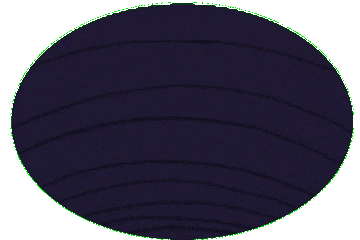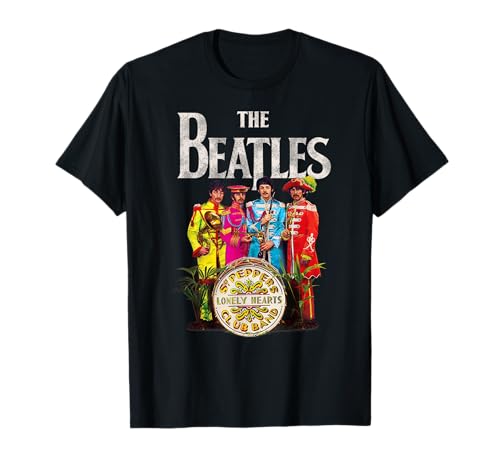Sgt. Pepper's Lonely Hearts Club Band
Sgt. Pepper's Lonely Hearts Club Band (often referred to simply as Sgt. Pepper) is the eighth studio album by the English rock band the Beatles. Released on 26 May 1967, Sgt. Pepper is regarded by musicologists as an early concept album that advanced the roles of sound composition, extended form, psychedelic imagery, record sleeves, and the producer in popular music. The album had an immediate cross-generational impact and was associated with numerous touchstones of the era's youth culture, such as fashion, drugs, mysticism, and a sense of optimism and empowerment. Critics lauded the album for its innovations in songwriting, production and graphic design, for bridging a cultural divide between popular music and high art, and for reflecting the interests of contemporary youth and the counterculture. At the end of August 1966, the Beatles had permanently retired from touring and pursued individual interests for the next three months. During a return flight to London in November, Paul McCartney had an idea for a song involving an Edwardian military band, forming the impetus of the Sgt. Pepper concept. For this project, they continued the technological experimentation marked by their previous album, Revolver (1966), this time without an absolute deadline for completion. Sessions began on 24 November at EMI Studios with compositions inspired by the Beatles' youth, but after pressure from EMI, the songs "Strawberry Fields Forever" and "Penny Lane" were released as a double A-side single in February 1967 and left off the LP. The album was then loosely conceptualised as a performance by the fictional Sgt. Pepper band, an idea that was conceived after recording the title track. A landmark work of British psychedelia, Sgt. Pepper is considered one of the first art rock LPs and a progenitor to progressive rock. It incorporates a range of stylistic influences, including vaudeville, circus, music hall, avant-garde, and Western and Indian classical music. With assistance from producer George Martin and engineer Geoff Emerick, many of the recordings were coloured with sound effects and tape manipulation, as exemplified on "Lucy in the Sky with Diamonds", "Being for the Benefit of Mr. Kite!" and "A Day in the Life". Recording was completed on 21 April. The cover, which depicts the Beatles posing in front of a tableau of celebrities and historical figures, was designed by the pop artists Peter Blake and Jann Haworth. Sgt. Pepper's release was a defining moment in pop culture, heralding the album era and the 1967 Summer of Love, while its reception achieved full cultural legitimisation for popular music and recognition for the medium as a genuine art form. The first Beatles album to be released with the same track listing in both the UK and the US, it spent 27 weeks at number one on the Record Retailer chart in the United Kingdom and 15 weeks at number one on the Billboard Top LPs chart in the United States. In 1968, it won four Grammy Awards, including Album of the Year, the first rock LP to receive this honour; in 2003, it was inducted into the National Recording Registry by the Library of Congress for being "culturally, historically, or aesthetically significant". It has topped several critics' and listeners' polls for the best album of all time, including those published by Rolling Stone magazine and in the book All Time Top 1000 Albums, and the UK's "Music of the Millennium" poll. More than 32 million copies had been sold worldwide as of 2011. It remains one of the best-selling albums of all time and was, as of 2018, the UK's best-selling studio album. A remixed and expanded edition of the album was released in 2017.
This article uses material from the Wikipedia article "Sgt. Pepper's Lonely Hearts Club Band", which is released under the Creative Commons Attribution-Share-Alike License 3.0.
References
| Title | Summary | |
|---|---|---|
| Colin Richardson's 1978 Interview with Harry Nilsson | Thanks to the kindness of Colin Richardson , his April 10, ... | |





![Sgt. Pepper's Lonely Hearts Club Band[Anniversary Edition] Sgt. Pepper's Lonely Hearts Club Band[Anniversary Edition]](https://m.media-amazon.com/images/I/51ObkoU+-PL._SL500_.jpg)
![Sgt. Pepper's Lonely Hearts Club Band[LP] [2017 Stereo Mix] Sgt. Pepper's Lonely Hearts Club Band[LP] [2017 Stereo Mix]](https://m.media-amazon.com/images/I/61ZD20GaaEL._SL500_.jpg)

![Sgt. Pepper's Lonely Hearts Club Band[Super Deluxe 4 CD/DVD/Blu-ray] Sgt. Pepper's Lonely Hearts Club Band[Super Deluxe 4 CD/DVD/Blu-ray]](https://m.media-amazon.com/images/I/61vwcOLe47L._SL500_.jpg)



